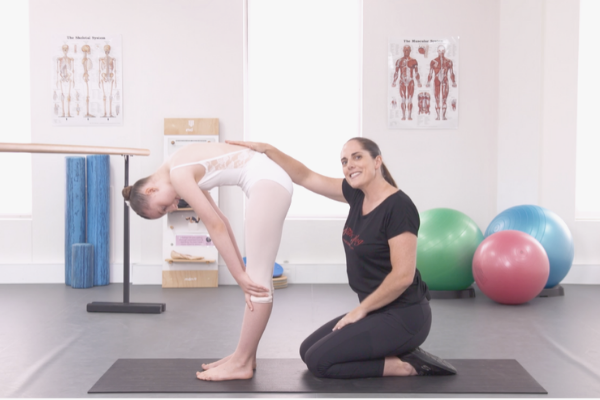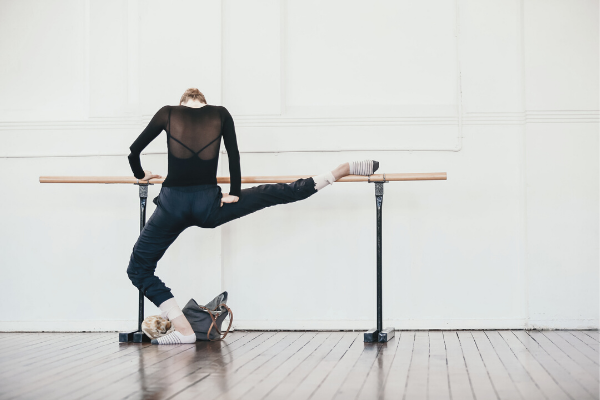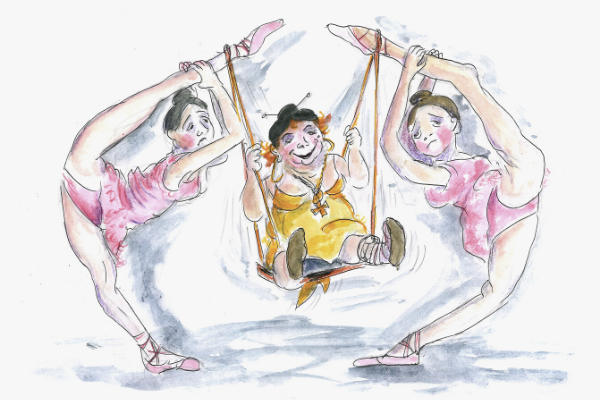The Body is a Metaphor for Life
I had the absolute pleasure of going back to NZ for the weekend, and despite several rather unsettling earthquakes that could influence your body, had the most amazing time. My nephew is just 20 months old, and my niece 3 ½, and they taught me so much in the 3 short days that I was with them.
Whenever I see small children, so fresh and new to this world, they always make me think of how it is that we learn, both intellectually and physically about the world around us. Watching little Blake master new words with a single exposure, and then remember them perfectly later in the day reminded me of how easily our brains can learn when they are open and available. (I have the cutest video of him learning to say Hippopotamus..!)
I also watched them physically and saw how easy it is for us to adopt physical habits that dictate how our body will work far off in the future. Especially during a child's most active rates of growth (young childhood and then adolescence) how they sit, stand and sleep can dramatically influence how their physical body develops. Both kids naturally sit in a ‘w-sit’ position, with their bottom between their feet, thigh bones twisted in. This position always makes be cringe because of the rotation through the knee joint and its influence on the hip. Their Mum (my Sister-in-Law) reports that she always sat like that (and has had problems with her knees) but didn’t realise that there was anything at all wrong with it. Trying to get the kids to switch to sitting on their feet, or on their bottoms made me feel like a very nagging Aunty, but really does have a massive influence on how their bodies will develop.
Over time, consistent internal rotation of the femur (thighbone) and rotation through the knee will encourage a slightly internally rotated hip socket and looser ligaments on the inside of the knee. Turned in legs are not just undesirable for dance, but can lead to lots of different knee issues as well.
What things do you do during the day that are shaping your body, either positively or negatively...?
Often we are a little oblivious to just how much we are conditioning our body with how we hold ourselves and move during the day, but every movement we do (or don’t do) will either take us closer to, or further away from our goals. So if you know that one hip is more turned out than the other, or you have a scoliosis to one side, take a few minutes during the day to observe yourself. When you are sitting, do you sit off to the side? Do you always stand on one foot more than the other? Do you always sleep on one side? Do you sink into your most comfortable range, and how does that correspond to your asymmetries? These seemingly simple things can have a huge impact on your body, so especially if you have been struggling with working on a particular area for a while with limited results, identifying the things that you do physically during the day may have a big effect in actually changing how this are of your body feels.

But it’s not only physical...
Take some time during the day to watch people around you. See if you can identify how that person is feeling simply from their body posture. Have you ever noticed that you can tell when someone is really down, or feeling depressed just from the slump of their shoulders? Even when you cannot see a person’s face, their body will normally give away what is going on inside. If someone is having a particularly difficult time, it may be really hard for them to hold a good posture during the day. Rather than work on stretching and strengthening the areas involved, we may need to actually address the deeper issue, which is driving the posture. While you often can’t change an external situation, you may be able to change the way you respond to it, feel about it, in a more empowered way.
It’s also sometimes a little like the Chicken and the Egg...
If you have been holding a certain posture for a long time, it may actually be making you feel a certain way, even though the original reason you were in that position is no longer there. Our bodies remember our habits far too well, and sometime changing how you are physically can have an enormous impact on your psychological state of mind. However, there is one more thing that you do have to be careful of, that I am personally very guilty of.

Even when we are feeling rotten on the inside, some of us are very good at putting on a very brave face to the rest of the world...
Many people may think that you have very good posture, but if you are forcing it, rather than really feeling it you can build up a lot of tension in certain areas of your body. This is really common in young dancers in the area of the upper back, right between the shoulder blades. We often “stand up straight!” to resist the internal slump that is happening which requires far more effort than it should if we were feeling good about things. This results in a lot of muscle and nerve tension in the upper back which can, in turn, interfere with your overall flexibility.
I hope that this helps you become more aware of the things that you do that are influencing your body, and what you can do about it!
Have a wonderful week,
Lisa
Flexibility Resources
If you are looking to delve deeper into this topic, check out the following programs:
- Front Splits Fast Program: This program translates therapeutic techniques for improving Fascial Mobility and Neural Tension into easy to do exercises that can enable instant changes in your flexibility without the risk of damage through over stretching.
- Level Two Online Flexibility Intensive: If you are a dance teacher, this is the perfect continued education course for you. During this course you will understand the multifactorial nature to flexibility training. You will also explore safe ways of assessing exactly where each individual is restricted in order to create the most effective program.
- Level Three Online Flexibility Intensive on 'How to Train Extreme Mobility Safely': This workshop will help you assess your students in detail and be able to offer them effective techniques in a logical clear order to get them on the way to achieving THEIR optimal flexibility. It is also for teachers who are concerned at the extreme positions young dancers are wanting to work into, as it gives you safe guidelines on how to guide their development.







